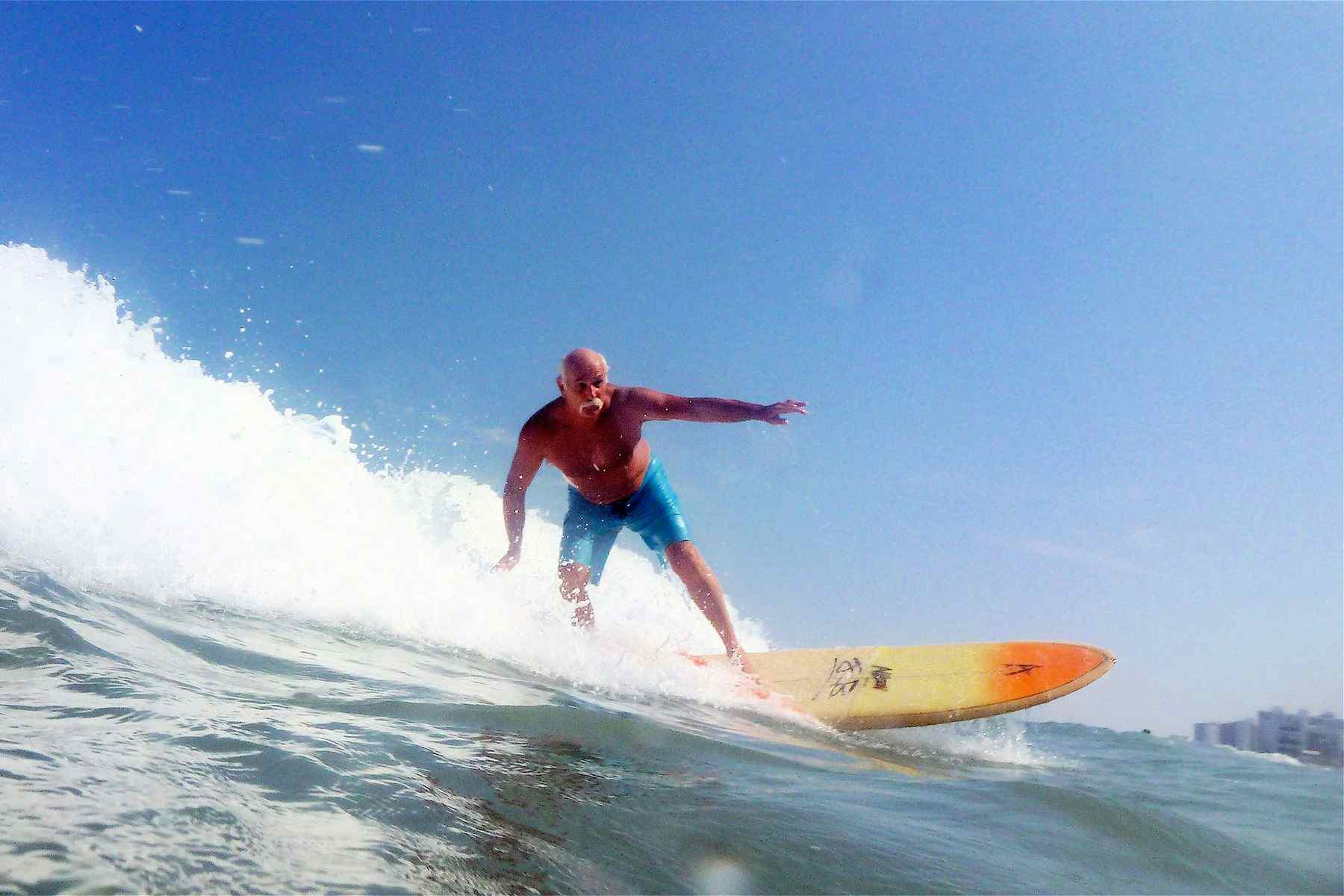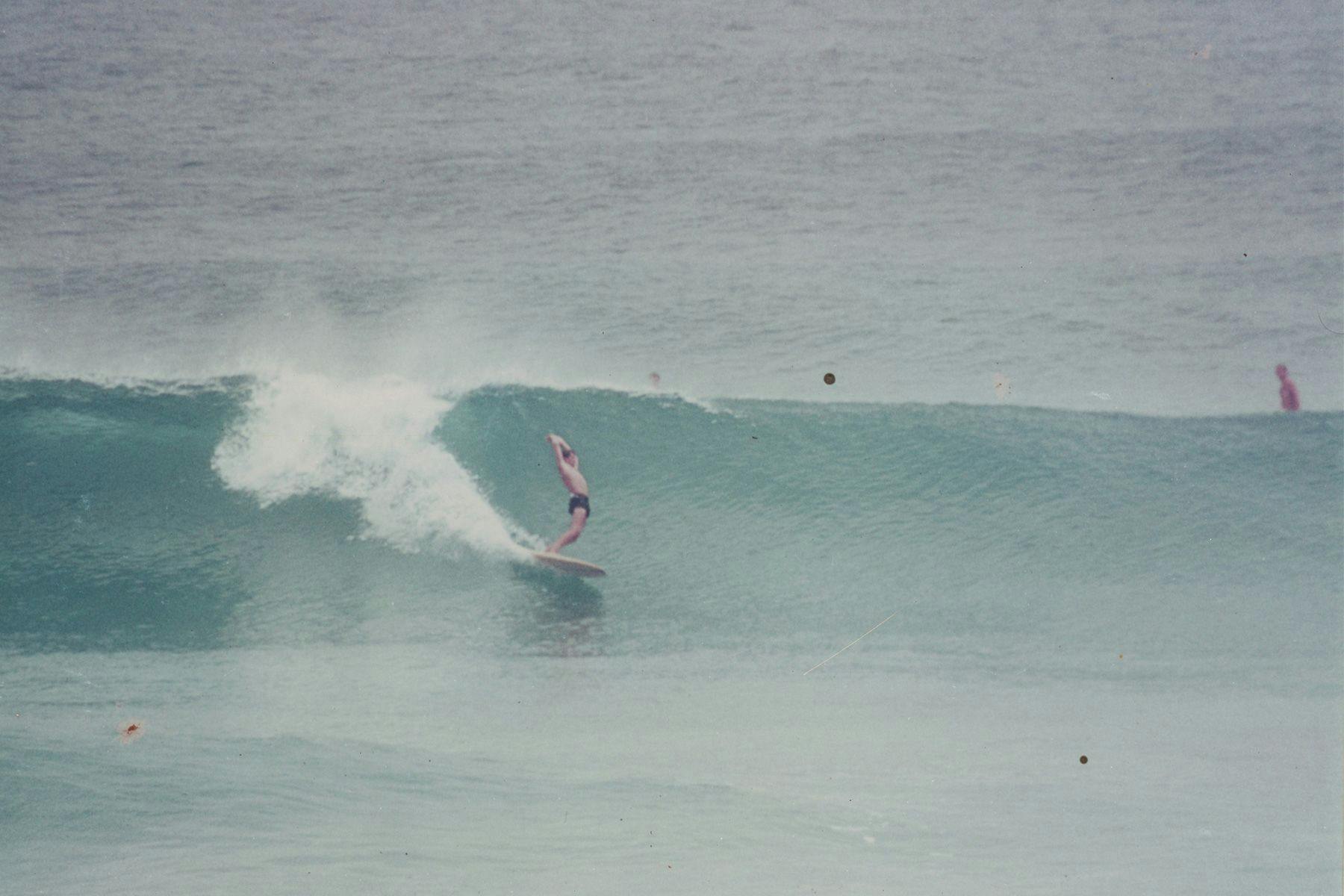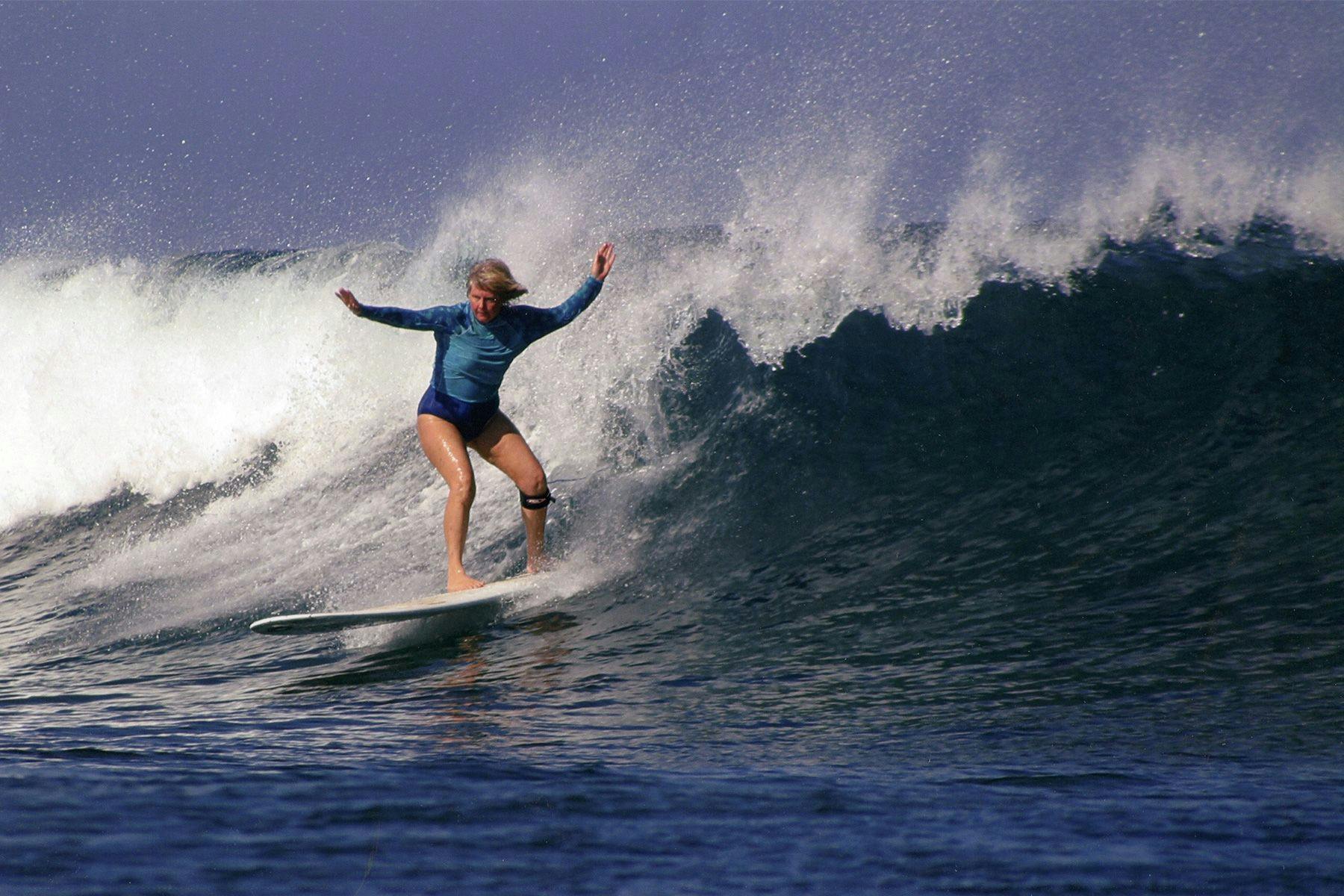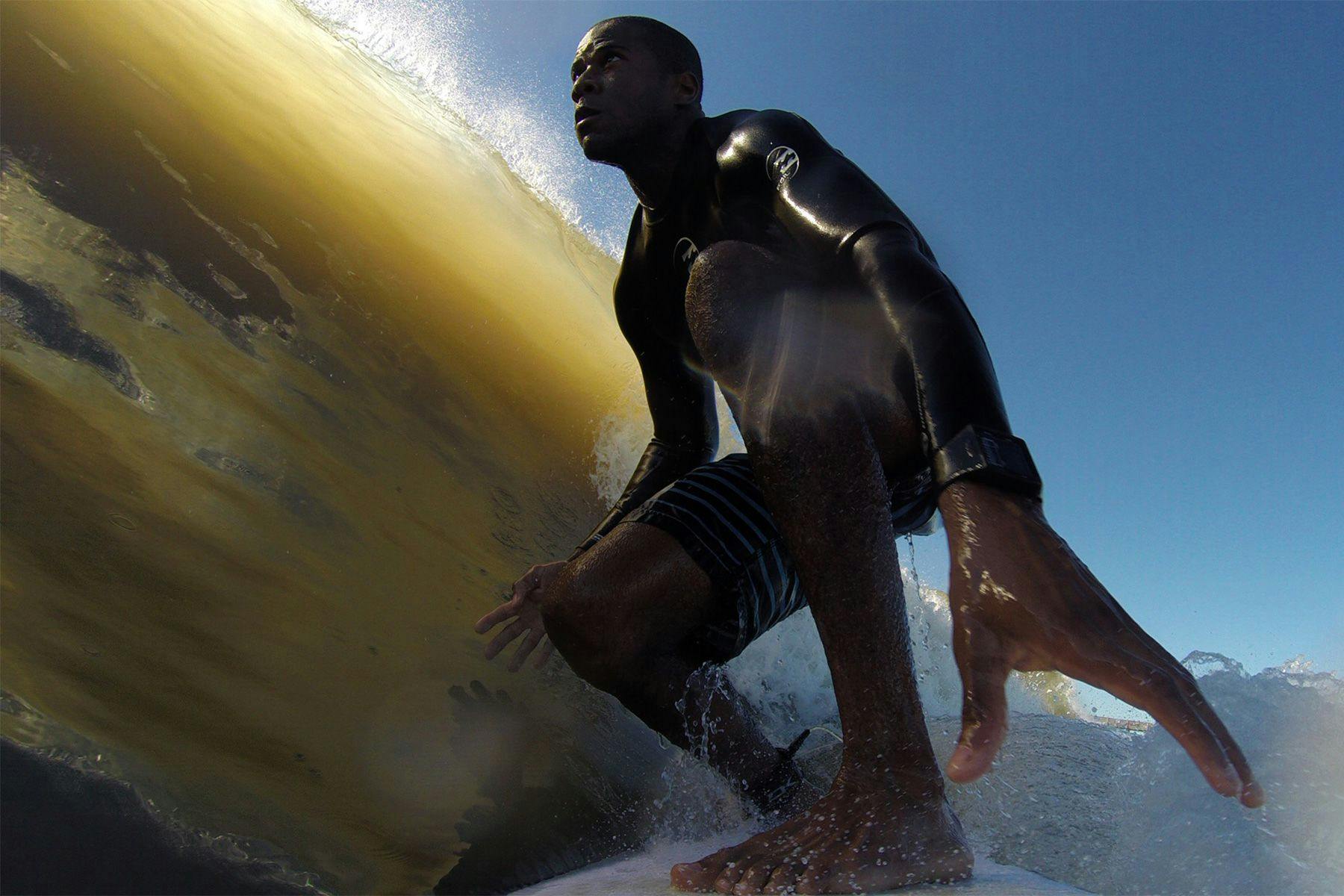Surf cultureSurfing the South

A Book on The Modern Surfing History of the Southern USA
It is fair to say that, internationally, surfers’ knowledge of the surfing history/culture of California or Hawai’i is inversely proportional of our knowledge of the surfing history/culture of Texas, or the Carolinas, or even Florida. Granted, given their historical roles and wave-potential, it is not completely surprising that this be the case. But that doesn’t change the fact that the US South has a surf culture of its own, and that if one is to get his/her head around what surfing in the US was/is/has become – and indeed what it can become – one must consider the whole coastline.
Dr. Steve Estes, a Carolina born and bred surfer and professor at Sonoma State University in California, is someone who has brought this consideration to another level. Tapping into his heritage and embracing the curiosity for modern U.S. history that led him to pursue a Ph.D., Steve set off on a 2,000-plus miles journey along the south coast of the United States, from Texas around to Maryland, interviewing the people and surfing the spots that compose the Southern wave-riding culture. Surfing the South, the paperback-and-kindle product of the trip, recounts these encounters and the conversations that emerged therein, laying out surf-related issues and unpacking both the idiosyncrasies of this surfing world and its surfers as well as what makes them one with the rest of the country.
Surf Simply caught up with Dr. Estes to hear more about the book, the trip, and the role of the American South in shaping the modern U.S. surfing history.

Steve, why is the surfing history of the US South important for the history of American surfing – as well as the history of surfing at large?
In terms of competitive surfing, the U.S. South (Florida, in fact) has produced four world champions, including the surfer many consider to be the greatest competitor in the modern era, Kelly Slater. Beyond competition results, the expansion of surf companies from California through the US South in the 1960s was a trial run for globalization of the industry from the 1970s through the present. Finally, I think southern surfing teaches us a lot about US history beyond sports, from civil rights to women’s rights, from Cold War militarization to modern environmentalism.
Where did the idea for the book come from?
I was going to write a cultural history of the Peanut Butter and Jelly sandwich. Then, I read William Finnegan’s Barbarian Days. His vivid descriptions of surfing Ocean Beach—my home break in San Francisco—inspired me to shift my focus to surfing. PB&J history was so laughable, that a book on southern surfing seemed downright sane by comparison.

You have conducted over forty interviews for Surfing the South. I imagine it is difficult to pick a “favourite”, but was there a particular comment, anecdote, or character that stood out for you?
Mike “Tank” Young, a surfer from Mobile, Alabama, was a great storyteller. He told me about paddling out one day as a hurricane approached the Gulf Coast. With each set getting progressively gnarlier, he found himself alone and afraid. Out of sheer desperation, he turned on a fifteen-footer, barely made the drop, and straightened out toward the beach. Tank probably added more than a few feet to the wave height (as we all do), but he told the tale so well, that I didn’t care. Even sitting on his couch, miles from the ocean, I could see that hurricane swell feathering on the outside and felt the involuntary urge to scratch and claw my way toward the horizon.
Similarly, is there a leg of the trip that holds a special place in your memory?
Taking the ferry to Ocracoke Island in North Carolina’s Outer Banks and then surfing glassy waves by ourselves a few hundred yards from where we pitched our tents the night before…experiences like that can fuel many lifetimes of surf travel.
You currently live in San Francisco but were born and raised in the Carolinas. Based on your experience, what are the main distinctions between the surf culture of these two regions?
Moving to Northern California from South Carolina, I experienced surf culture shock. After many years, I’ve finally acclimated to the cold water and heavy waves of Ocean Beach. The lineup tends to be quieter and more serious at OB. South Carolina waves are much less consistent, but also much more user-friendly, which tends to translate into more camaraderie in the lineup. Don’t get me wrong; there’s a great surf community in both places.
In the introduction to the book, using adjectives such as “waist-high”, “choppy”, and “breaking haphazardly”, you paint a pretty clear picture of what I suppose most surf spots in this region tend to be like. We can all imagine the cons…but can you talk about some of the pros of cutting your teeth at such fickle grounds?
With the exception of large ground swells that spin off of hurricanes, southern waves tend to be short-period wind swell that rarely make for long rides. On the other hand, it’s rarely death defying, so it’s easy to learn. The pros that I interviewed said that they were glad to learn in small surf, because contests are often held in middling conditions. Growing up in the South meant that they could shred on anything. Those moves don’t always translate to larger waves, but hey, Floridians Lisa Andersen and Kelly Slater did just fine in contests with big surf.

You are both a surfer and a historian specialising in the social and cultural history of the USA, and I assume that the writing of Surfing the South was a means to merge these two passions. With that intersection in mind, what would you say are some of the primary ways surfing has influenced the country’s socio-cultural spheres it has touched?
Most of the folks I interviewed had some connection to the military either serving themselves or being the kids of servicemen and women. The military bases that dot the southern coast connect those communities to California and Hawaii through deployments, which then helped spur the growth of southern surfing. That history was hiding in plain sight.

Your previous books all deal with issues of gender, race, and power – and so does Surfing the South, to a certain extent. I was wondering if you could share your thoughts on these matters through the lens of surfing? And as someone who studies these themes, how have you been witnessing the changes in perspective and attitudes in the water?
Race and gender definitely shape surfing in the U.S. The people of color and women that I interviewed faced additional obstacles in learning to surf due to their race or gender. Sadly, that’s true in California and the Carolinas. Stone Singleton, a black surfer from South Carolina told me that he loved travelling to Costa Rica not just for the better waves, but because he found more diversity in the lineup. Women just got equal prize money in the World Surf League, so things are changing, but it’s a slow evolution.
Besides the central theme, how else did this project differ from the other books?
I had way more fun “researching” and writing this book. I saw the humor in the experience rather than taking it all so seriously. Compared to other surf stories, I didn’t set out to find the best secret breaks or get a series of insane video edits. This was an old-school surf trip—more about exploration and adventure than chasing forecasted swell.
With more than forty interviews, plus all the events that happened on the road, you could have probably filled a thousand pages. How did you go about organising the stories and structuring the book?
On the surface, it’s organized geographically in the order of the places that I visited from Texas through Florida on the Gulf and then up the East Coast through the Carolinas, Virginia, and Maryland. But each chapter also has a theme that emerged from the interviews. For example, the Louisiana chapter focuses on the environment, the Alabama chapter deals with music, and the Cocoa Beach chapter is about competition.
I like that you took your daughter along and that you used the trip as a way to share your southern heritage as well as bond with her. Can you tell us a bit about the experience?
Several years ago, on a trip to New Orleans, my daughter confessed to a waitress that she’d never had grits. She was born in San Francisco, so that made sense. But I realized a huge part of my heritage was missing from her upbringing. This trip helped remedy that and then some. Plus, it turned her into a frothing grom.
In hindsight, how do you feel the writing of this book has transformed you as a surfer? And, as a person?
I got much more comfortable surfing longboards on this trip. I grew up in the 1980s when it was super-uncool to ride longer boards. Even through the longboard revival of the 1990s and 2000s, I clung to that prejudice. This trip opened my eyes to the beauty and grace of longboarding.
I also came to appreciate different points of view on what it means to be not just a surfer, but a southerner. America’s political divide is also geographic one, but if you stop to talk to people who share a similar passion (for surfing and the ocean, in this case), you can start to bridge that divide. It’s not a road to utopia, but it’s a path more of us should travel.

The following essay, How (Not) to Buy a Board on Craigslist, is part of the first chapter of Surfing the South; it is featured here with the permission of the author.
Buying a board on Craigslist in the best of circumstances is a fool’s errand. Sellers flake. They promise to meet you at the most inconvenient time in a distant location, maddeningly lost in the one percent of North America that Google has yet to map. More often than not, they sell the board twenty minutes before you arrive to some dude for $5 more than you were offering. Or maybe they give you the old bait and switch. The beautiful picture of the pristine, hand-shaped board that you thought you were buying morphs into a dinged-up beater that MacGyver fixed with duct tape and chewing gum back in 1987. If those are the normal problems of local Craigslist commerce, imagine the complications of buying on-line from 1500 miles away.
This particular attempt to buy a used log on Craigslist occurred in Houston at the beginning of a 2300-mile surf trip with my daughter through the American South. But arranging to buy (or even see) a board in Texas from my home base in Northern California proved nearly impossible. Several boards I made offers on fell through before I left San Francisco. Still, there were two possibilities.
One of the Craigslist prospects was a beautiful 9’6” longboard made by a reputable Florida shaper. There were a few red flags. The guy selling the board lived forty miles northwest of Houston, the opposite side of town from the beach. More ominously, he would take cash for the board, but he preferred to trade it for a four-wheeler, welding equipment, or guns. Perhaps you are hearing the banjo line from Deliverance. Or maybe you’re the person in the horror movie audience that screams out, “No, don’t do it!” right before a likable character volunteers to investigate strange noises in the basement of a rented lake house. Look, I went to college in Texas. I wasn’t too worried about buying a board from an adrenaline-fueled hobby welder and gun collector. Then again, I had my daughter with me. It might not be the smartest move to drive to a nondescript Houston suburb with hundreds of dollars in cash. Luckily, the guy didn’t return my calls. He later explained via text that he slept through our meeting. The board (bait?) was still listed on Craigslist two months later.
I had really been hoping to get the first board even if I did have to trade some guns to get it. The second option looked much less appealing. Both boards measured 9’6”, but the similarity ended there. The first prospect had been shaped with care for performance—relatively narrow and thin with a nice bit of rocker. If that board had been a naval ship, it would have been a destroyer, large and fearsome, but still maneuverable. The inspiration for the second board—wide, thick, and flat for ease of paddling—must have been an aircraft carrier. Actually, this is unfair to carriers. A better comparison would be to a school bus … if a school bus could float. To make matters worse, this board was painted the same exact color as a school bus. That obnoxious yellow paintjob supposedly makes buses safer for their passengers. This board seemed to be painted for the safety of anyone unlucky enough to be surfing nearby.
The board had been made at Bingo’s, a surf shop and café on the Gulf Coast not known especially for quality boards or food. One on-line review suggested that better eats and gear could be had down the street at a place called Kook’s, which has since closed. Bingo’s soldiers on.
With all of this advance research, I had low expectations for the Bingo Board. Part of me secretly hoped that the owner would continue my perfect record of Craigslist failures. Just when I had resigned myself to buying a used board from a shop in Galveston, my phone buzzed with an incoming text. It was about the Bingo Board.
“I should be home by 5:00pm and am happy to show it to you. Would you like to set a location in order to try and counter my potential ambush murder or just come by the house?”
I figured a crazed Craigslist murderer probably wouldn’t lead with that, so we agreed to meet at his house in Friendswood, southeast of Houston. Friendswood is such a vanilla suburb that Kirk, the seller, warned me not to speed unless I “look like Flanders” from the Simpsons. Coincidentally, the older I get, the more I resemble Ned Flanders, minus the awesome paintbrush mustache. My daughter and I sped through Friendswood in our rented SUV. No cops even gave us a second glance.
Kirk turned out to be a former military guy about my age with tons of surf experience not only on the Gulf Coast, but around the world. In his garage, Kirk had an impressive quiver of boards. There was a bagged 8’0” fun-shape in the front of the rack. I wanted it sight unseen. Nope, that was his favorite board, not for sale. Sadly, I watched Kirk move a series of nice boards out of the way until he unearthed the Bingo Board from its shameful place at the back of the rack. The Bingo belonged to his brother. Its leash had snapped during an ill-fated session, sending the board careening toward some rocks. The boulders beat on the Bingo Board like a gang of mobsters in matching tracksuits and unnecessarily heavy gold chains, leaving the board pock marked with pressure dings, but miraculously almost water tight. These boulders clearly knew what they were doing. Kirk patched the worst one of the dings, a gash on the right rail, and threw it up on Craigslist, hoping some fool would buy it.
The fool told Kirk about his crazy plans for the southern surf odyssey. Kirk nodded noncommittally. He exhibited the practiced poker face of a pro with a sucker on the line. We made small talk about the breaks in Texas. The best waves, he said were a six-hour drive the opposite direction from where I was headed. Of course, I had just missed a solid swell a few days earlier. The small talk wound down. I had a decision to make about the Bingo Board.
At this point, I was pretty desperate to buy the board despite all of its obvious flaws and blemishes. If I didn’t close this deal, I was going to have to pay a shop hundreds more dollars for a similarly suspect log. My only real concern about the Bingo Board was that it didn’t come with fins, a leash, or a bag, all of which were going to eat away at my already tiny budget. I voiced these concerns, and Kirk magically produced three bottom-of-the-barrel fins and a calf leash with a rusted swivel. Then, in a moment of charity or pity, he actually haggled me down in price for the board, fins, and leash. This was too easy. Was the Bingo Board a cursed artifact that could only be passed voluntarily to its next victim? Was that creepy old doll in the dark corner of Kirk’s garage really tracking me with its googly eyes?
I came to the conclusion that this was a win-win transaction. Kirk was getting rid of a white elephant—or rather a school bus yellow one. I was acquiring a board that, while not exactly a work of art, would catch even the smallest ripple in the Gulf or Atlantic. Given that ripples constituted a best-case scenario for this trip, the Bingo Board made sense. After strapping the Craigslist miracle on the car, an eleven-year old grom and a mustache-less Ned Flanders raced toward a date with the wild waves of Galveston, Texas.
*****
Order your copy of Surfing the South here.
